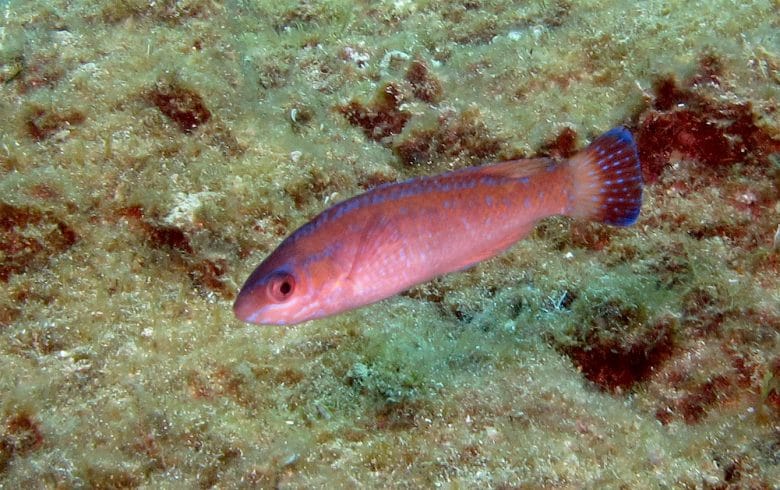
This little wrasse is 12 to 15cm long with a pink-brown body and a black tail with a white border. During spawning periods, the males deploy more attractive colours and fluorescent blue spots. It feeds mostly on parasites that it collects from other fish. It performs this cleaning in specific locations and fish wishing to use its services will adopt a distinctive position. Some stop moving and point their heads downwards or upwards, while others remain horizontal and open their mouths and opercula. The species is endemic to the Mediterranean but not found in the Black Sea. The blacktailed wrasse lives in Posidonia seagrass beds and on rocky bottoms down to 25m.
Phylum: Vertebrates
Class: Osteichthyes
Order: Perciformes
Family: Labridae
Scientific name: Symphodus melanocercus
French: Labre nettoyeur
Spanish: Llambrega
Italian: Tordo codanera
German: Schwarzschwans Lippfisch






















